Jinjing Zhu
Exploring the Vulnerabilities of Federated Learning: A Deep Dive into Gradient Inversion Attacks
Mar 13, 2025
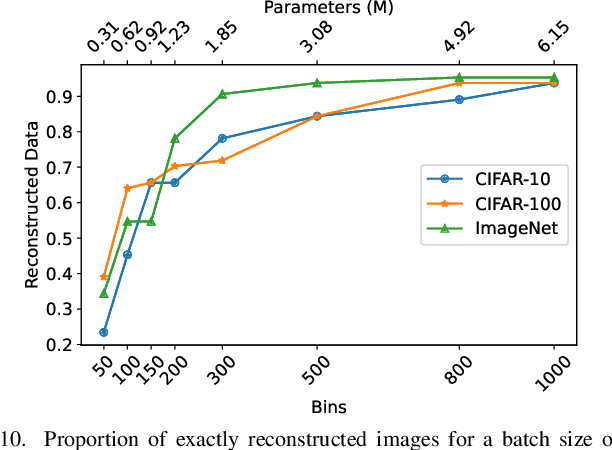
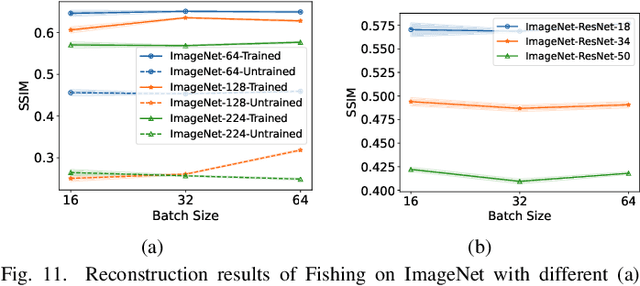
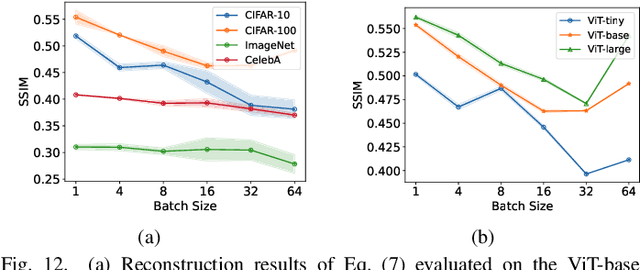
Abstract:Federated Learning (FL) has emerged as a promising privacy-preserving collaborative model training paradigm without sharing raw data. However, recent studies have revealed that private information can still be leaked through shared gradient information and attacked by Gradient Inversion Attacks (GIA). While many GIA methods have been proposed, a detailed analysis, evaluation, and summary of these methods are still lacking. Although various survey papers summarize existing privacy attacks in FL, few studies have conducted extensive experiments to unveil the effectiveness of GIA and their associated limiting factors in this context. To fill this gap, we first undertake a systematic review of GIA and categorize existing methods into three types, i.e., \textit{optimization-based} GIA (OP-GIA), \textit{generation-based} GIA (GEN-GIA), and \textit{analytics-based} GIA (ANA-GIA). Then, we comprehensively analyze and evaluate the three types of GIA in FL, providing insights into the factors that influence their performance, practicality, and potential threats. Our findings indicate that OP-GIA is the most practical attack setting despite its unsatisfactory performance, while GEN-GIA has many dependencies and ANA-GIA is easily detectable, making them both impractical. Finally, we offer a three-stage defense pipeline to users when designing FL frameworks and protocols for better privacy protection and share some future research directions from the perspectives of attackers and defenders that we believe should be pursued. We hope that our study can help researchers design more robust FL frameworks to defend against these attacks.
Rethinking Knowledge in Distillation: An In-context Sample Retrieval Perspective
Jan 13, 2025



Abstract:Conventional knowledge distillation (KD) approaches are designed for the student model to predict similar output as the teacher model for each sample. Unfortunately, the relationship across samples with same class is often neglected. In this paper, we explore to redefine the knowledge in distillation, capturing the relationship between each sample and its corresponding in-context samples (a group of similar samples with the same or different classes), and perform KD from an in-context sample retrieval perspective. As KD is a type of learned label smoothing regularization (LSR), we first conduct a theoretical analysis showing that the teacher's knowledge from the in-context samples is a crucial contributor to regularize the student training with the corresponding samples. Buttressed by the analysis, we propose a novel in-context knowledge distillation (IC-KD) framework that shows its superiority across diverse KD paradigms (offline, online, and teacher-free KD). Firstly, we construct a feature memory bank from the teacher model and retrieve in-context samples for each corresponding sample through retrieval-based learning. We then introduce Positive In-Context Distillation (PICD) to reduce the discrepancy between a sample from the student and the aggregated in-context samples with the same class from the teacher in the logit space. Moreover, Negative In-Context Distillation (NICD) is introduced to separate a sample from the student and the in-context samples with different classes from the teacher in the logit space. Extensive experiments demonstrate that IC-KD is effective across various types of KD, and consistently achieves state-of-the-art performance on CIFAR-100 and ImageNet datasets.
CLIP the Divergence: Language-guided Unsupervised Domain Adaptation
Jul 01, 2024Abstract:Unsupervised domain adaption (UDA) has emerged as a popular solution to tackle the divergence between the labeled source and unlabeled target domains. Recently, some research efforts have been made to leverage large vision-language models, such as CLIP, and then fine-tune or learn prompts from them for addressing the challenging UDA task. In this work, we shift the gear to a new direction by directly leveraging CLIP to measure the domain divergence and propose a novel language-guided approach for UDA, dubbed as CLIP-Div. Our key idea is to harness CLIP to 1) measure the domain divergence via the acquired domain-agnostic distribution and 2) calibrate the target pseudo labels with language guidance, to effectively reduce the domain gap and improve the UDA model's generalization capability. Specifically, our major technical contribution lies in the proposed two novel language-guided domain divergence measurement losses: absolute divergence and relative divergence. These loss terms furnish precise guidelines for aligning the distributions of the source and target domains with the domain-agnostic distribution derived from CLIP. Additionally, we propose a language-guided pseudo-labeling strategy for calibrating the target pseudo labels. Buttressed by it, we show that a further implementation for self-training can enhance the UDA model's generalization capability on the target domain. CLIP-Div surpasses state-of-the-art CNN-based methods by a substantial margin, achieving a performance boost of +10.3% on Office-Home, +1.5% on Office-31, +0.2% on VisDA-2017, and +24.3% on DomainNet, respectively.
Any360D: Towards 360 Depth Anything with Unlabeled 360 Data and Möbius Spatial Augmentation
Jun 19, 2024



Abstract:Recently, Depth Anything Model (DAM) - a type of depth foundation model - reveals impressive zero-shot capacity for diverse perspective images. Despite its success, it remains an open question regarding DAM's performance on 360 images that enjoy a large field-of-view (180x360) but suffer from spherical distortions. To this end, we establish, to our knowledge, the first benchmark that aims to 1) evaluate the performance of DAM on 360 images and 2) develop a powerful 360 DAM for the benefit of the community. For this, we conduct a large suite of experiments that consider the key properties of 360 images, e.g., different 360 representations, various spatial transformations, and diverse indoor and outdoor scenes. This way, our benchmark unveils some key findings, e.g., DAM is less effective for diverse 360 scenes and sensitive to spatial transformations. To address these challenges, we first collect a large-scale unlabeled dataset including diverse indoor and outdoor scenes. We then propose a semi-supervised learning (SSL) framework to learn a 360 DAM, dubbed Any360D. Under the umbrella of SSL, Any360D first learns a teacher model by fine-tuning DAM via metric depth supervision. Then, we train the student model by uncovering the potential of large-scale unlabeled data with pseudo labels from the teacher model. M\"obius transformation-based spatial augmentation (MTSA) is proposed to impose consistency regularization between the unlabeled data and spatially transformed ones. This subtly improves the student model's robustness to various spatial transformations even under severe distortions. Extensive experiments demonstrate that Any360D outperforms DAM and many prior data-specific models, e.g., PanoFormer, across diverse scenes, showing impressive zero-shot capacity for being a 360 depth foundation model.
Energy-based Domain-Adaptive Segmentation with Depth Guidance
Feb 06, 2024Abstract:Recent endeavors have been made to leverage self-supervised depth estimation as guidance in unsupervised domain adaptation (UDA) for semantic segmentation. Prior arts, however, overlook the discrepancy between semantic and depth features, as well as the reliability of feature fusion, thus leading to suboptimal segmentation performance. To address this issue, we propose a novel UDA framework called SMART (croSs doMain semAntic segmentation based on eneRgy esTimation) that utilizes Energy-Based Models (EBMs) to obtain task-adaptive features and achieve reliable feature fusion for semantic segmentation with self-supervised depth estimates. Our framework incorporates two novel components: energy-based feature fusion (EB2F) and energy-based reliable fusion Assessment (RFA) modules. The EB2F module produces task-adaptive semantic and depth features by explicitly measuring and reducing their discrepancy using Hopfield energy for better feature fusion. The RFA module evaluates the reliability of the feature fusion using an energy score to improve the effectiveness of depth guidance. Extensive experiments on two datasets demonstrate that our method achieves significant performance gains over prior works, validating the effectiveness of our energy-based learning approach.
Source-Free Cross-Modal Knowledge Transfer by Unleashing the Potential of Task-Irrelevant Data
Jan 10, 2024
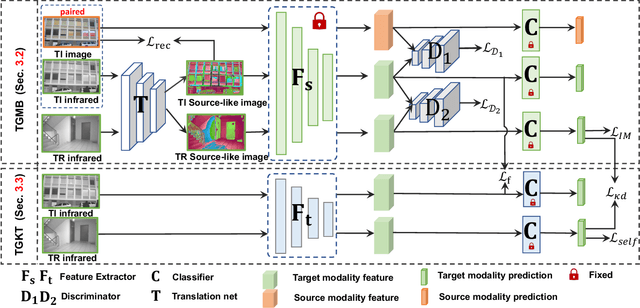
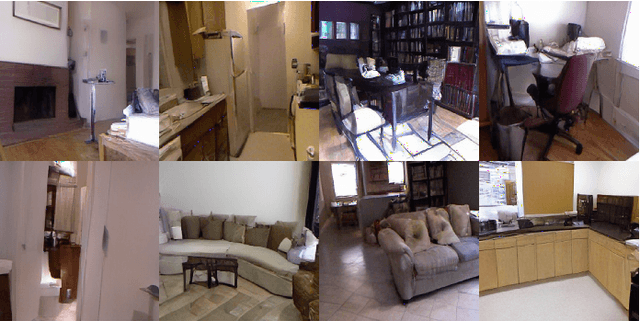
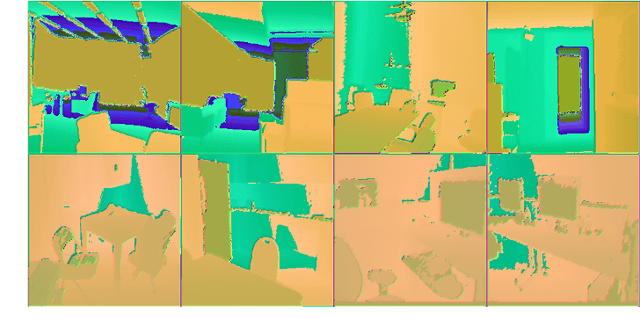
Abstract:Source-free cross-modal knowledge transfer is a crucial yet challenging task, which aims to transfer knowledge from one source modality (e.g., RGB) to the target modality (e.g., depth or infrared) with no access to the task-relevant (TR) source data due to memory and privacy concerns. A recent attempt leverages the paired task-irrelevant (TI) data and directly matches the features from them to eliminate the modality gap. However, it ignores a pivotal clue that the paired TI data could be utilized to effectively estimate the source data distribution and better facilitate knowledge transfer to the target modality. To this end, we propose a novel yet concise framework to unlock the potential of paired TI data for enhancing source-free cross-modal knowledge transfer. Our work is buttressed by two key technical components. Firstly, to better estimate the source data distribution, we introduce a Task-irrelevant data-Guided Modality Bridging (TGMB) module. It translates the target modality data (e.g., infrared) into the source-like RGB images based on paired TI data and the guidance of the available source model to alleviate two key gaps: 1) inter-modality gap between the paired TI data; 2) intra-modality gap between TI and TR target data. We then propose a Task-irrelevant data-Guided Knowledge Transfer (TGKT) module that transfers knowledge from the source model to the target model by leveraging the paired TI data. Notably, due to the unavailability of labels for the TR target data and its less reliable prediction from the source model, our TGKT model incorporates a self-supervised pseudo-labeling approach to enable the target model to learn from its predictions. Extensive experiments show that our method achieves state-of-the-art performance on three datasets (RGB-to-depth and RGB-to-infrared).
A Unified Framework for Unsupervised Domain Adaptation based on Instance Weighting
Dec 08, 2023
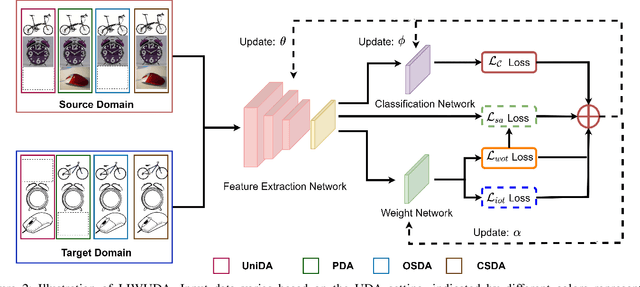

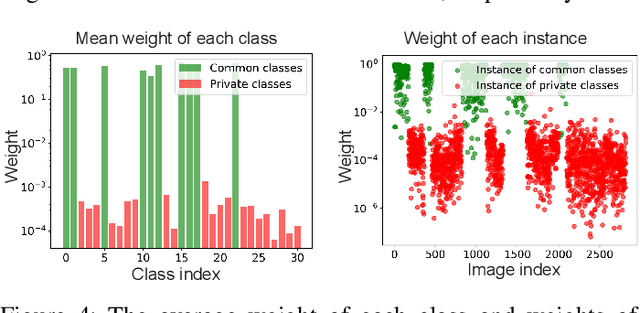
Abstract:Despite the progress made in domain adaptation, solving Unsupervised Domain Adaptation (UDA) problems with a general method under complex conditions caused by label shifts between domains remains a formidable task. In this work, we comprehensively investigate four distinct UDA settings including closed set domain adaptation, partial domain adaptation, open set domain adaptation, and universal domain adaptation, where shared common classes between source and target domains coexist alongside domain-specific private classes. The prominent challenges inherent in diverse UDA settings center around the discrimination of common/private classes and the precise measurement of domain discrepancy. To surmount these challenges effectively, we propose a novel yet effective method called Learning Instance Weighting for Unsupervised Domain Adaptation (LIWUDA), which caters to various UDA settings. Specifically, the proposed LIWUDA method constructs a weight network to assign weights to each instance based on its probability of belonging to common classes, and designs Weighted Optimal Transport (WOT) for domain alignment by leveraging instance weights. Additionally, the proposed LIWUDA method devises a Separate and Align (SA) loss to separate instances with low similarities and align instances with high similarities. To guide the learning of the weight network, Intra-domain Optimal Transport (IOT) is proposed to enforce the weights of instances in common classes to follow a uniform distribution. Through the integration of those three components, the proposed LIWUDA method demonstrates its capability to address all four UDA settings in a unified manner. Experimental evaluations conducted on three benchmark datasets substantiate the effectiveness of the proposed LIWUDA method.
Towards Dynamic and Small Objects Refinement for Unsupervised Domain Adaptative Nighttime Semantic Segmentation
Oct 07, 2023Abstract:Nighttime semantic segmentation is essential for various applications, e.g., autonomous driving, which often faces challenges due to poor illumination and the lack of well-annotated datasets. Unsupervised domain adaptation (UDA) has shown potential for addressing the challenges and achieved remarkable results for nighttime semantic segmentation. However, existing methods still face limitations in 1) their reliance on style transfer or relighting models, which struggle to generalize to complex nighttime environments, and 2) their ignorance of dynamic and small objects like vehicles and traffic signs, which are difficult to be directly learned from other domains. This paper proposes a novel UDA method that refines both label and feature levels for dynamic and small objects for nighttime semantic segmentation. First, we propose a dynamic and small object refinement module to complement the knowledge of dynamic and small objects from the source domain to target nighttime domain. These dynamic and small objects are normally context-inconsistent in under-exposed conditions. Then, we design a feature prototype alignment module to reduce the domain gap by deploying contrastive learning between features and prototypes of the same class from different domains, while re-weighting the categories of dynamic and small objects. Extensive experiments on four benchmark datasets demonstrate that our method outperforms prior arts by a large margin for nighttime segmentation. Project page: https://rorisis.github.io/DSRNSS/.
A Good Student is Cooperative and Reliable: CNN-Transformer Collaborative Learning for Semantic Segmentation
Jul 24, 2023Abstract:In this paper, we strive to answer the question "how to collaboratively learn convolutional neural network (CNN)-based and vision transformer (ViT)-based models by selecting and exchanging the reliable knowledge between them for semantic segmentation?" Accordingly, we propose an online knowledge distillation (KD) framework that can simultaneously learn compact yet effective CNN-based and ViT-based models with two key technical breakthroughs to take full advantage of CNNs and ViT while compensating their limitations. Firstly, we propose heterogeneous feature distillation (HFD) to improve students' consistency in low-layer feature space by mimicking heterogeneous features between CNNs and ViT. Secondly, to facilitate the two students to learn reliable knowledge from each other, we propose bidirectional selective distillation (BSD) that can dynamically transfer selective knowledge. This is achieved by 1) region-wise BSD determining the directions of knowledge transferred between the corresponding regions in the feature space and 2) pixel-wise BSD discerning which of the prediction knowledge to be transferred in the logit space. Extensive experiments on three benchmark datasets demonstrate that our proposed framework outperforms the state-of-the-art online distillation methods by a large margin, and shows its efficacy in learning collaboratively between ViT-based and CNN-based models.
Test-Time Adaptation for Nighttime Color-Thermal Semantic Segmentation
Jul 10, 2023Abstract:The ability to scene understanding in adverse visual conditions, e.g., nighttime, has sparked active research for RGB-Thermal (RGB-T) semantic segmentation. However, it is essentially hampered by two critical problems: 1) the day-night gap of RGB images is larger than that of thermal images, and 2) the class-wise performance of RGB images at night is not consistently higher or lower than that of thermal images. we propose the first test-time adaptation (TTA) framework, dubbed Night-TTA, to address the problems for nighttime RGBT semantic segmentation without access to the source (daytime) data during adaptation. Our method enjoys three key technical parts. Firstly, as one modality (e.g., RGB) suffers from a larger domain gap than that of the other (e.g., thermal), Imaging Heterogeneity Refinement (IHR) employs an interaction branch on the basis of RGB and thermal branches to prevent cross-modal discrepancy and performance degradation. Then, Class Aware Refinement (CAR) is introduced to obtain reliable ensemble logits based on pixel-level distribution aggregation of the three branches. In addition, we also design a specific learning scheme for our TTA framework, which enables the ensemble logits and three student logits to collaboratively learn to improve the quality of predictions during the testing phase of our Night TTA. Extensive experiments show that our method achieves state-of-the-art (SoTA) performance with a 13.07% boost in mIoU.
 Add to Chrome
Add to Chrome Add to Firefox
Add to Firefox Add to Edge
Add to Edge